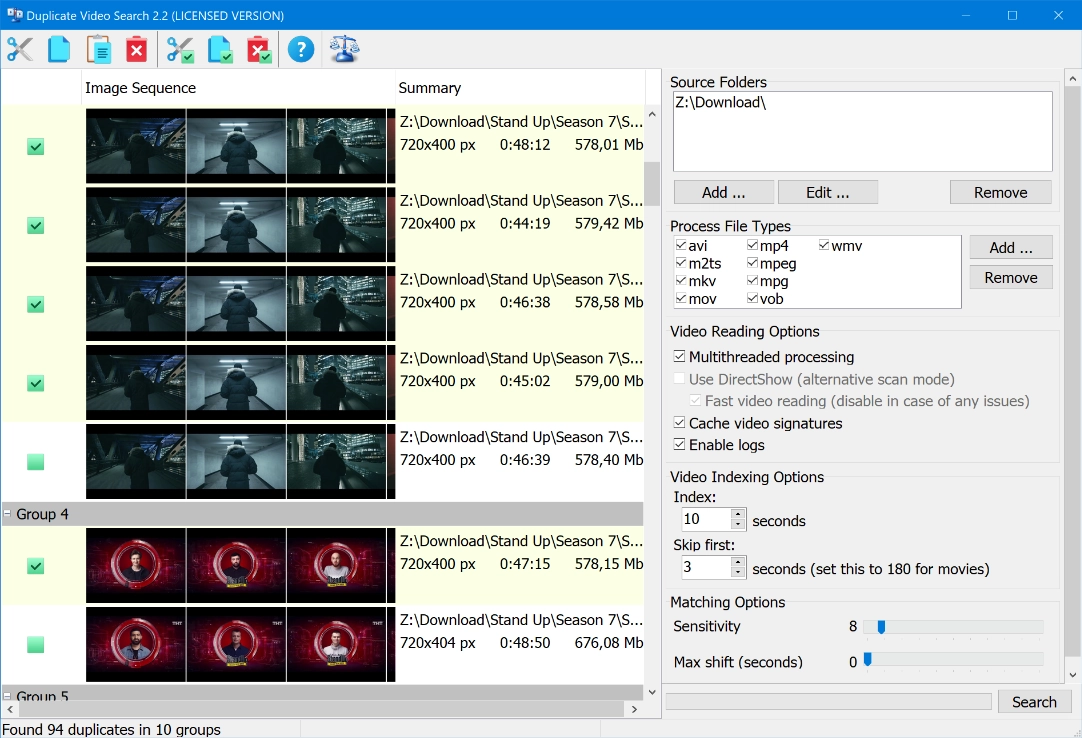Locate Duplicates with Video Fingerprinting
In today's digital age, the amount of video content being produced and consumed is growing rapidly. With the rise of social media, video sharing sites, and other online platforms, the need for effective content management has become more important than ever. One major challenge facing content creators and distributors is the management of duplicate videos. Duplicates can take up valuable storage space, cause confusion for users, and even lead to copyright infringement issues. However, thanks to video fingerprinting technology, locating and managing duplicates has become much easier.
Duplicate Video Search
The Duplicate Video Search tool lets you locate, modify and remove duplicate video files. Unlike other video detection apps, DVS uses unique video fingerprinting technology. As DVS scans your videos, it creates a small digital fingerprint for each clip, containing all sorts of essential details that describe them. It then uses the data generated through video fingerprinting to compare and contrast each video.
Video Fingerprinting Technology
Video fingerprinting technology is a form of digital watermarking that creates a unique, digital signature or fingerprint for each video file. This fingerprint is based on the video's unique visual and audio features, such as color, brightness, contrast, motion, and sound. By creating a fingerprint, the technology can identify a video file even if it has been altered, compressed, or transcoded. This makes video fingerprinting technology an effective tool for locating duplicate videos.
How it works
The process of using video fingerprinting technology to locate duplicates typically involves three steps: extraction, indexing, and matching. In the extraction step, the video file is analyzed and key visual and audio features are extracted to create a unique fingerprint. In the indexing step, the fingerprint is stored in a database along with metadata about the video, such as its title, duration, and format. In the matching step, the fingerprint is compared to other fingerprints in the database to identify any matches or similarities.
The matching process can be customized to suit specific needs. For example, a content creator may want to search for exact duplicates, while a distributor may want to find videos that are similar but not identical. The matching process can also consider other factors, such as file size, resolution, and bitrate, to help refine the search.
Once duplicates are identified, they can be removed or merged to reduce storage and bandwidth usage. This not only saves valuable resources, but also ensures that users are not confused by multiple versions of the same video. Furthermore, content creators and distributors can use video fingerprinting technology to prevent duplicates from being uploaded in the first place. By comparing the fingerprints of new videos to those already in the database, the technology can prevent duplicates from being uploaded and flag potential copyright infringement issues.
Video fingerprinting technology is not perfect, however, and there are limitations to its effectiveness. For example, the technology may not be able to identify duplicates that have been heavily edited or altered. It is also possible for two videos to have the same fingerprint, although the chances of this happening are extremely low.
Despite these limitations, digital video fingerprinting technology is an important tool for content creators and distributors in the fight against duplicate videos. By using this technology to locate duplicates, content creators and distributors can save time, resources, and reduce the risk of copyright infringement. Furthermore, users can benefit from a more streamlined and efficient content experience. Overall, video fingerprinting technology is a powerful tool that should be considered as part of any content management strategy.
More About Video Fingerprinting
This Wikipedia article is a good point to continue exploring the video fingerprinting world.
